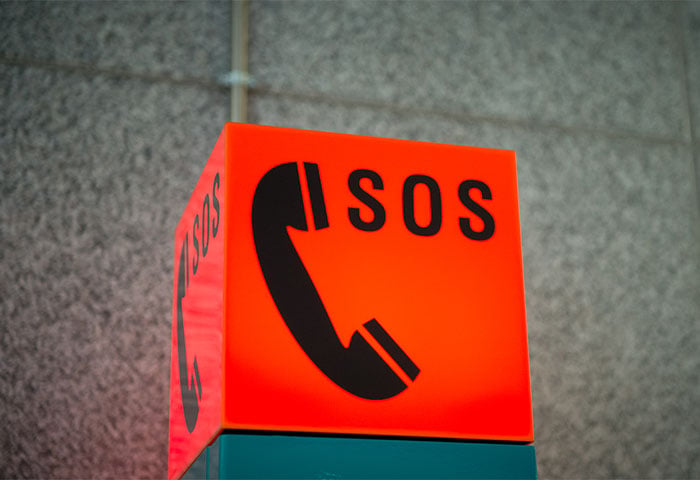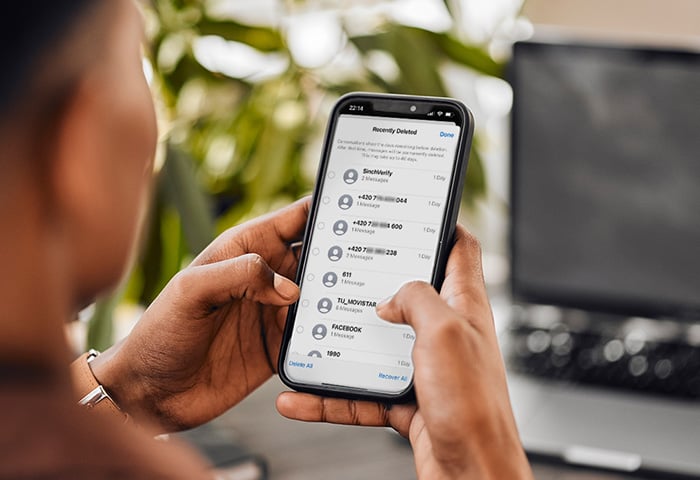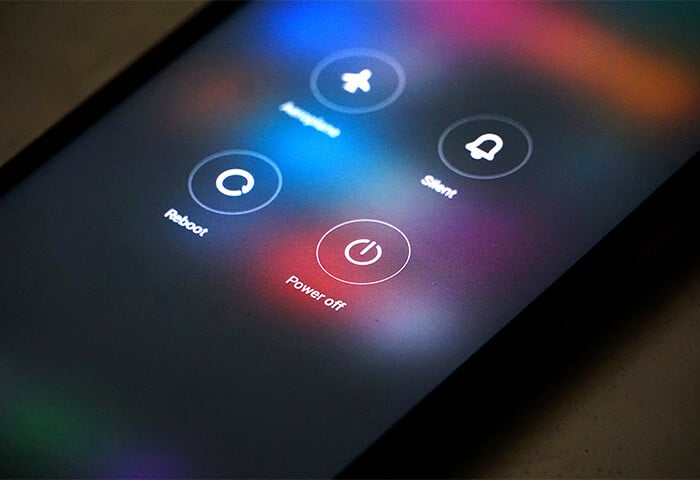Why won't my Android phone connect to Wi-Fi?
Here are some of the most common reasons why your Android can't connect to Wi-Fi:
Hardware issues
-
Range proximity: Your Android device should be placed within range of your router to ensure a high-quality signal. Your connectivity can be affected if your device is too far away, in another room, or even near large pieces of furniture. Try moving physically closer to your router or boosting the strength of your home Wi-Fi signal.
-
Your phone or tablet case: Protecting your device is important, but mobile or tablet cases can be bulky and may affect your device’s ability to connect by impeding the signal transmission between your phone and Wi-Fi router. Remove your case to see if your connection improves.
-
Damaged hardware: Network cables can become damaged over time and impact your connectivity. Using cables that are incompatible with your router or modem can also lead to connection issues. Try new cables to see if it resolves the issue.
Software Issues
-
Outdated software: In some cases, your device might not be connecting to Wi-Fi if you have an outstanding software update to install. Updating your software and apps can improve your phone’s functionality and help patch system vulnerabilities.
-
A device infection: If you use your Android device to download files or install social or gaming apps, you could have inadvertently installed a virus or other type of malware. Removing the virus from your phone should resolve your connectivity issues. If your router is hacked, you’ll need to remove the router malware.
Technical Issues
-
Interrupted Wi-Fi signal: Your Wi-Fi signal can be impacted by another Wi-Fi network nearby or any other electronic devices that emit a similar frequency.
-
Altered router settings: If you recently changed your router or updated its settings, that could affect your Wi-Fi connectivity.
-
Wi-Fi usage limits: Your internet service provider (ISP) may restrict or block your connection if you’ve exceeded your home network traffic allowance. Or, you could be experiencing ISP throttling.
-
Incorrect network or password: Your household has a unique SSID (network name) and password. When putting in your password credentials, click the “eye icon” located next to the password field on your device to make sure you’ve entered it correctly.
-
VPN delays: VPNs provide an additional layer of protection when you’re using the internet, but some can noticeably slow down your connection. Set up a new mobile VPN, such as AVG Secure VPN for Android, which has more than 50 servers to connect to around the world.
-
Your Wi-Fi is off: It may seem obvious, but it can be easy to accidentally toggle your Wi-Fi off without realizing it. If that’s the case, turning it back on is an easy fix.
How to reconnect your Android device to Wi-Fi
There are a lot of reasons why your Wi-Fi can stop working. We’ll show you some quick-fix solutions — but before you do anything else, check that your Wi-Fi is turned on:
-
Swipe down from the top of your phone to expand the notification bar. Swipe down again if required.
-
Tap the Wi-Fi button to toggle your Wi-Fi on and off.

If your Android still has no internet connection, check to see if your Wi-Fi connection is working on another device. If it isn’t, there could be an issue with your Wi-Fi. However, if other devices remain unaffected, the problem is likely with your Android phone or tablet.
Restart your Android device
Restarting your device will force your apps to stop any background operations and reboot system operations, which can improve performance. However, you should first forget your network to stop it from automatically reconnecting again.
Here’s how to forget your network and then restart your Android device:
-
Go to Settings > Network and Internet > Wi-Fi. Remember that Android settings differ depending on your model and version, so you may need to adapt these steps slightly. On Samsung, go to Settings > Connections > Wi-Fi.

-
Choose your Wi-Fi network and select Forget (the trash icon).

-
Restart your Android device.
-
Go back to Wi-Fi in Settings.
-
Select your Wi-Fi network and enter your Wi-Fi password (also known as a network security key). Learn how to find your Wi-Fi password and reset it if needed.
Check your Android settings
If restarting your Android device doesn’t fix your connection, here’s how to troubleshoot Wi-Fi issues in your phone or tablet settings.
Turn off Airplane mode
If your Android can’t connect to Wi-Fi, make sure Airplane/flight mode is off, which can interfere with internet connections.
Here’s how to check and turn off airplane mode:
-
Swipe down from the top of your phone to expand the notification bar. You may need to swipe down again or to the side to see all the options.
-
Look for the airplane flight mode icon and tap it if you need to turn it off.
Turn off location
GPS tracking can affect your mobile internet by interfering with your Wi-Fi connection. Try turning off location tracking and see if the Wi-Fi connectivity issues persist.
To check and turn off location services, go to Settings, scroll down, and tap the Location icon to disable it if it’s on.
Turn off parental controls
Parental controls can help keep kids safe online, but they can also include settings that limit your child’s Wi-Fi connection. If your kid’s Android can’t connect to Wi-Fi, try switching parental controls off and on again.
Here’s how to turn off parental controls:
-
Go to the Play Store app on your child’s phone.
-
Tap Menu > Settings > Parental controls.
-
Here you can toggle parental controls off and on. You will need to enter your PIN to confirm this.
Update your password
Have you recently changed your network password? If you use a password manager, your new Wi-Fi password may not have synced correctly. To resolve this, navigate to your password manager and try adding the new Wi-Fi password again.
Turn on auto connect
When you use Wi-Fi regularly in a particular location, such as in the home, your device can view this network as “trusted” and enable your tablet or phone to automatically connect to it. But if this has been turned off, you’ll need to reconnect it.
To check or turn on your automatic network connection on a Samsung:
-
Open Settings > Connections >Wi-Fi.
-
Tap the cog icon to the right of the network name.
-
You can now toggle Auto reconnect on or off.

On other Androids, the process will look something like this:
-
Open Settings > Network and Internet> Internet.
-
Tap the cog icon or arrow to the right of the network.
-
You can now toggle Auto connect on or off.
Update your device OS
Keeping your Android operating system (OS) up to date can help future-proof your Wi-Fi connectivity and protect your device against security vulnerabilities that updates patch. In many cases, phones automatically update to a new OS version, but sometimes you need to force an Android update.
To check for OS updates on your Samsung:
-
Go to Settings, tap Software update (sometimes called System updates).
-
Tap Download and install > Check for system updates.
-
If an update is available it should begin downloading immediately. On some Samsung devices you need to tap Download now for it to begin.

On other Androids, the process will look something like this:
-
Go to Settings > System > Software update.
-
You’ll see your update status. Follow any instructions on your screen.
Reset your router
If you still have no internet connection on your Android device, your router or modem may be responsible. To reset your router or modem, follow these steps:
-
Unplug your router or modem and wait for 30 seconds.
-
Plug it in again and wait until all indicator lights are on.
-
Check your device to see if your Wi-Fi connectivity issue is fixed.
Check for device interference
-
Microwaves operate at the same frequency as Wi-Fi and may disrupt your connection while in use. Try relocating your router and device to another spot in your home and see if this makes a difference.
-
Bluetooth connections shouldn’t typically affect your Wi-Fi. However, if you have a lot of Bluetooth devices in your home, there could be some interference. Try turning off any Bluetooth devices or settings to see if this helps improve your connection.
-
Router connectivity can be affected by interference from other nearby networks like a neighbor’s Wi-Fi. One way that might resolve this is to switch to a dual-band router, which can free up bandwidth. A Wi-Fi extender or adapter for your router can also help boost weak network signals.
Reset your network settings
If all the other tips haven’t worked, you can try resetting your network settings, but this will include mobile and Bluetooth settings as well.
-
Go to Settings > System. Tap Advanced (or a similar option) > Reset options > Reset Wi-Fi, mobile & Bluetooth.

-
Choose Reset settings and tap Confirm.

On a Samsung, go to Settings > General management. Tap Reset > Reset network settings > Reset settings > Reset.
Revert to factory settings
If you still have a Wi-Fi connection failure on your Android after attempting all the solutions above, you may need to revert your device to its factory settings. This will clear your Android’s cache, free up storage, and return all settings to the manufacturer’s presets.
This process is irreversible, so only do this if you have a backup of all your files, photos, and documents — or you don’t mind losing everything stored on your phone!
Reset your Android device to its factory settings with these steps:
-
Go to Settings > System. Tap Reset options (this may be under Advanced settings) and select Erase all data (factory reset).

-
Tap Erase all data. You may need to confirm your device PIN or biometrics.

-
Your device should now revert to factory settings, and you can try connecting to your Wi-Fi network again.
If you have a Samsung, the factory reset steps may be different. Go to Settings > General management. Tap Reset > Factory data reset > Reset. You may be asked to enter your security lock. Then, tap Delete all and enter your Samsung account’s password.
Contact your supplier for further support
If none of the above has solved the problem, contact your Android supplier and/or manufacturer (Samsung, Google, Nokia, etc.) for further support.
Keep your phone running smoothly with AVG Cleaner for Android
With AVG Cleaner, you can clean out junk files, help boost your phone's battery life, and free up valuable space to improve your phone’s overall performance. Our specialized optimization app will help keep your phone running like new again and give you more room for the things that matter most.
























